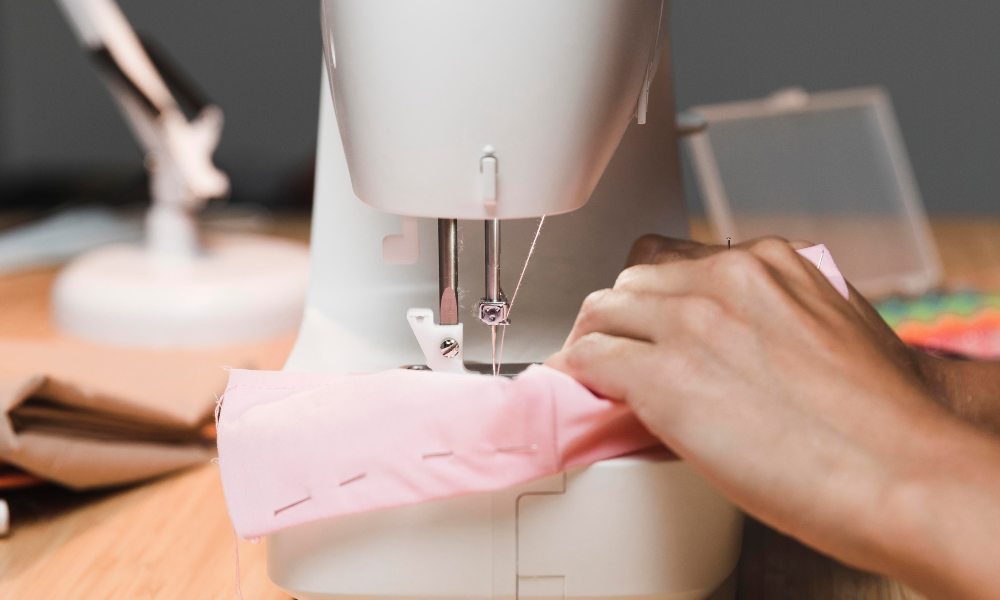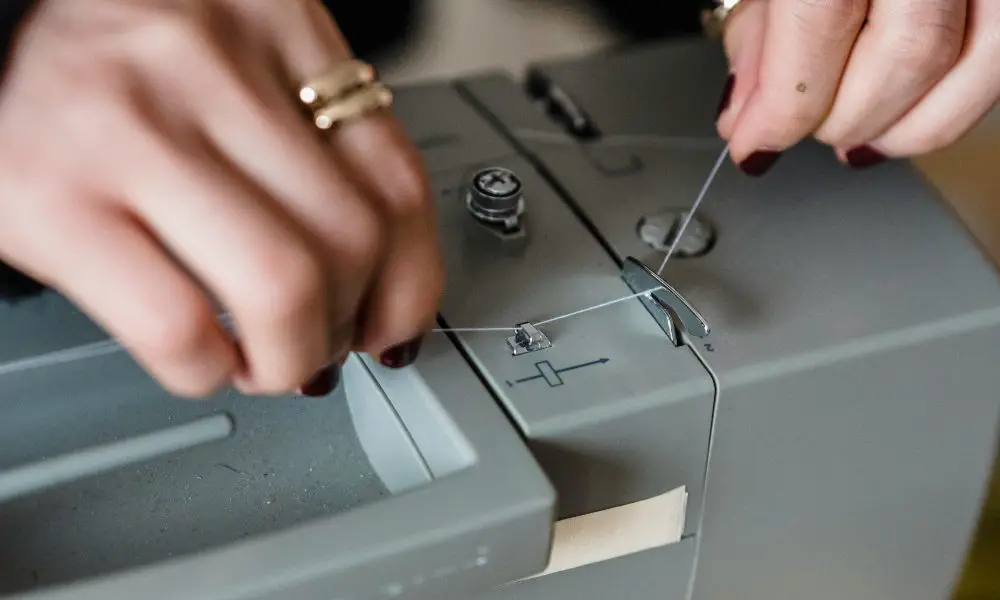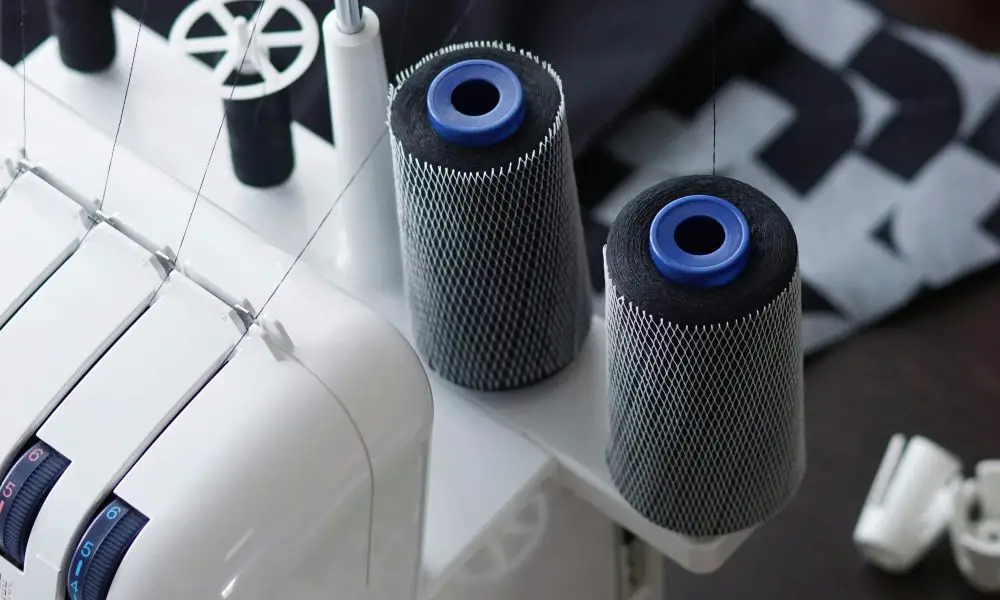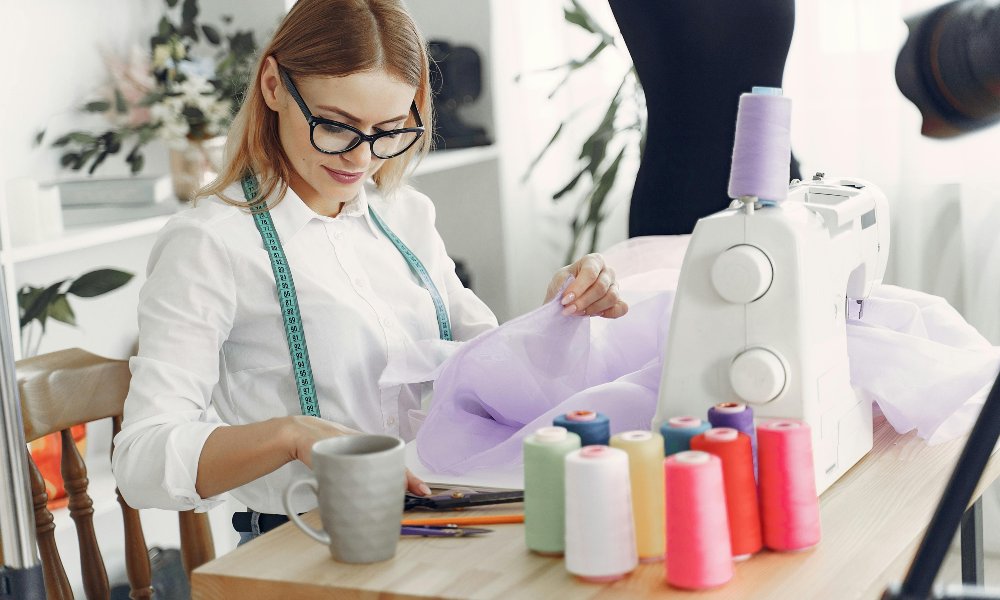Threading the needle is often the biggest headache regarding sewing machines. Get it right every time with this simple guide:
- Raise the presser foot and needle to the highest position
- Place the thread on the spool pin at the top
- Follow the thread path, guiding it through each thread guide
- Bring the thread behind the needle from right to left
- Insert the thread front-to-back through the needle eye
- Pull about 6 inches of thread through and lower presser foot
Are you still confused? Keep reading for a step-by-step walkthrough. By the end, you’ll be threading needles like a seasoned seamstress!
Preparing the Machine and Thread
The first step to threading success is appropriately preparing your sewing machine and thread. Skipping this crucial setup can lead to tangled messes and skipped stitches.
Raise the Needle and Presser Foot
Before you even think about threading, raise the presser foot all the way up using the presser foot lever. This prevents the thread from getting stuck under the foot as you’re guiding it through.
Next, raise the needle to its highest possible position by turning the hand wheel towards you. Having the needle up makes getting the thread through that tiny eye much more accessible.
Position the Thread Spool
Now it’s time to set up the thread spool or bobbin. Most machines have a spool pin or holder at the top, often with a cap or thread guide to keep the spool secure as it unwinds. Place your spool on this pin, pulling the thread through any guides or tensioners.
Bonus Tip: Use The Right Needle
For best results, ensure you use your fabric’s correct needle type and size. A universal needle works for most woven fabrics, while knits require a ballpoint or stretch needle. Get it wrong, and your project will have skipped stitches, puckering, or holes.
Guide the Thread Through the Machine

With the machine and thread prepped, you can start guiding that pesky thread through all the correct paths and tension discs. This is where things can get a bit fiddly – but follow along carefully.
Find the Thread Path
Most sewing machines have built-in guides indicating the correct path for the thread. Typically, it goes from the spool through a few upper guides and tension discs and down to the take-up lever near the needle. Some machines require bringing the thread through additional guides near the needle before inserting it.
Slowly Guide the Thread Step-by-Step
Move patiently, carefully pulling the thread through each guide from right to left. Ensure it doesn’t get stuck, tangled, or slip out of any discs. Go slowly and keep the thread taut but not pulled too tight.
If you get lost or in trouble, refer to your machine’s manual for the specific thread path. Every model is a bit different.
Thread the Needle
You reached the last step – getting that thread through the needle’s tiny eye. For this, you may want to employ some tools or tricks.
Use a Needle Threader or Tweezers
Invest in a handy needle threader device, or keep a pair of tweezers nearby. Either can help you grip and guide that thread end through the eye without straining your eyes or losing your mind. Just don’t yank the thread too hard.
Try the Bringing It Over Method
If you don’t have any tools, try this approach: Guide the thread behind the needle from right to left. Then, bring it forward while holding the end in a U shape and insert it through the front of the eye.
Double Check Before Lowering Foot
Once the thread is successfully through the eye, give it a gentle tug to pull it taut along the full thread path. Ensure it hasn’t slipped out of any guides before finally lowering that presser foot to secure it.
FAQs
How often should I change my needle?
Change your needle every 8 hours of sewing time for best results or whenever it gets dull, bent, or burred. Signs of a worn needle include skipped stitches, fraying threads, or fabric damage.
Why did my thread keep breaking?
Breaking threads are usually caused by incorrect threading, poor thread quality, dull or burred needles, or improperly inserted bobbin thread. Double-check all of these potential culprits.
I’m having trouble with stretchy fabrics. Help!
When sewing, using ballpoint or stretch needles specifically designed for knits, jerseys, or stretchy materials is recommended. The rounded tip prevents skipped stitches and fabric damage.
***
Do you have any other threading troubles? Comment below, and let’s troubleshoot! A well-threaded needle is the foundation for enjoyable, quality sewing.
***
Main image: pexels




